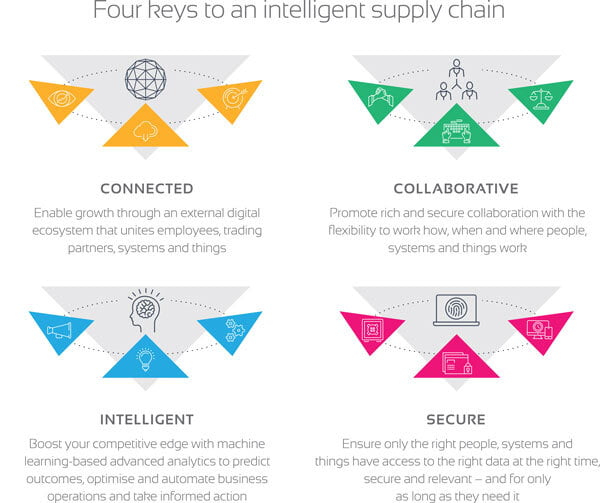Connecting supply chain and sales
Since the dawn of capitalism, businesses have been predicated on mass production. In this model, big companies have the advantage – and they win by marshalling resources on a global scale, synchronizing supply chain activities with sweat and tears, and decreasing production costs through economies of scale. Today, however, the digital economy is showing companies a new way forward. Business success depends on individualization, not mass production.

Many companies operate in silos and struggle to reach efficiencies across their operations. An obvious example is the disconnect between sales and marketing and supply chain. Most companies identify this as one of the key issues that costs them money, resources and delivers poor customer experiences.
This is why New Global Media are working with businesses to integrate sales & marketing and supply chain by connecting technologies and using a mix of smarts such as automation to deliver operational savings of up to 90%.
By 2019, 35% of consumer product manufacturers will have started direct-to-consumer customer experience teams with the long-term aim of going all direct to the consumer. IDC FutureScape: Worldwide Customer Experience 2018 Predictions
Redefining Digital Transformation with Supply Chain Transformation
If much of this sounds like digital transformation, you’re not mistaken. After all, supply chains are fundamental to how companies function and digital transformation is about fundamental change. Success in this economy is not about adopting cool and new technologies that might give a business unit a boost here or there. No. It’s about empowering organizations to creatively mix and use these technologies to do entirely new things in entirely different ways. Technology serves the business, not the other way around. For example, Uber, quite famously, has transformed the taxi industry with a new platform-based business model that delivers the transportation people need. Even though the company does not own a single taxi, the model is cheaper and global. Uber’s supply chain does not move automobiles and parts it uses people and technology to ignite change.
One common theme across all of these examples of market dynamism is the creative, strategic use of digital supply chain capabilities to transform the business. Smart companies are reinventing their supply chains to drive innovation and connect with customers at a deeper level.
TO SUCCEED IN TODAY’S DIGITAL ECONOMY, COMPANIES NEED TO:
Increase customer centricity: supply chain automation brings processes based on real-time demand and increases responsiveness while maintaining flexibility.
Develop capabilities for predictive operations: digital twin technology for product and asset intelligence enables new business models.
Implement smart automation: machine learning and other emerging technologies help make and distribute personalized products with flexible production cells.
Achieve total supply chain visibility: A digital mirror of your business and flexible business networks empower companies to profitably serve customer segments of one.

Supply Chain
If you want to discuss how we can empower and transform your business, please contact our team.
